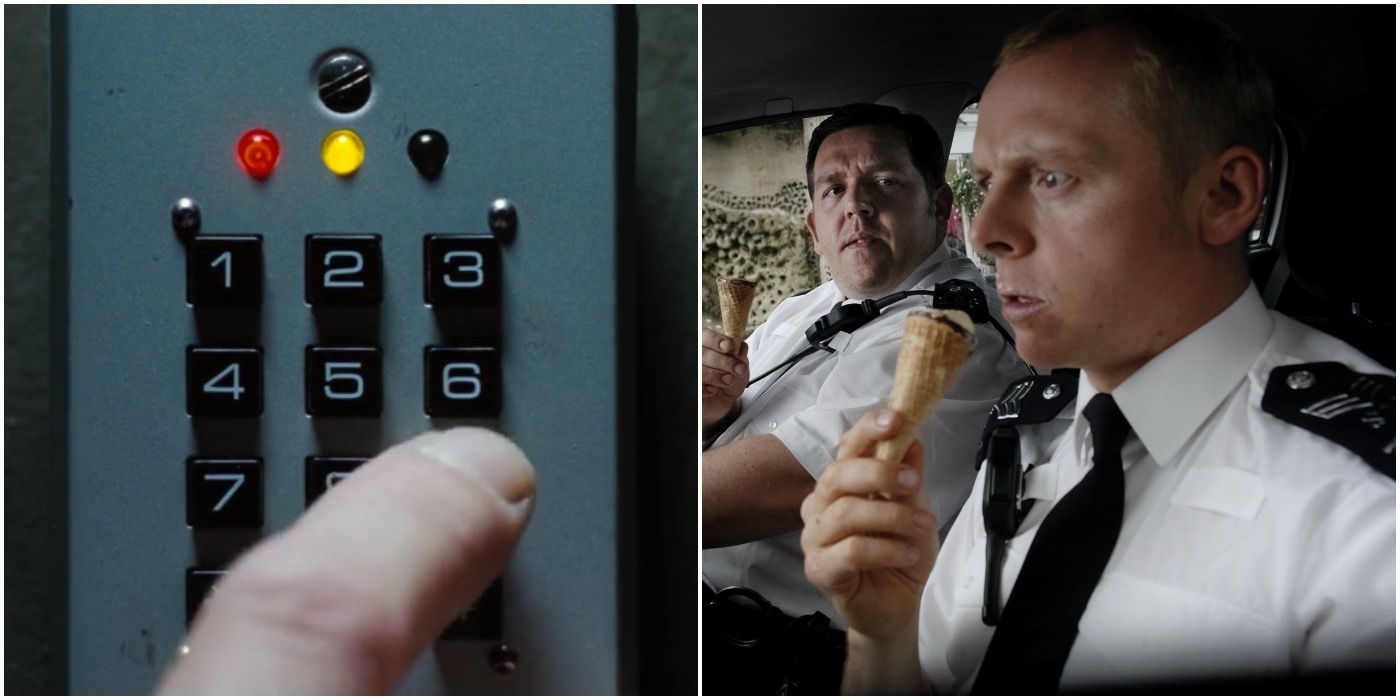Edgar Wright’s 2007 action-comedy Hot Fuzz has a strange relationship with the number nine. Exactly why this is has often been overlooked, but for fans of the beloved filmmaker, it shouldn’t come as a surprise. Since gaining international acclaim in 2004 with his second feature, Shaun of the Dead, Wright’s style has consistently been a talking point for those who love to seek out Easter eggs as well as references to a wide range of films. Because of this, Wright’s films greatly lend themselves to repeat viewings.
Hot Fuzz follows the transfer of over-achieving London top cop Nicholas Angel (Simon Pegg) to Sandford, where he befriends fellow cop Danny Butterman (Nick Frost), son of police chief Frank (Jim Broadbent). Though Sandford is a far cry from the realities of London, Angel soon finds himself struggling to convince the village that an ongoing string of murders are neither accidental nor coincidental. The mystery of who is behind these killings and why steadily unravels, and clues are carefully strewn throughout the film. In terms of the number nine’s involvement with this, however, exactly who knows the truth to these questions might just be partly answered by the digit.
On the surface, Hot Fuzz initially seems relatively straightforward, much like Sandford. However, as things progress, the prevalence of nine hints that more is taking place beneath the surface. The single digit can be seen in slightly more obscure ways – such as the fact that Hot Fuzz was released in 2007 (seven plus two equals nine), to the more obvious instances, like how nine is spray painted on a fountain in the village square, as well as on a wall in an alleyway. The code to the police evidence room happens to be 999, and during the film’s grand final battle, Dr. Robin Hatcher (Stuart Wilson) has a toe blown off by Danny’s shotgun, leaving him with nine remaining. Are these mere coincidences? Or do they actually have something to say about what’s going on in Sandford?
What appears to be the case is that Wright uses nine both thematically and literally in the film. Seeing Frank Butterman plug the number three times into the evidence room keypad is the basis for the references to nine. All other cases of the number in the film seem to be a shorthand for the safety and security that 999 is intended to represent.

As for the spray-painted nines within Sandford, it could be that Edgar Wright is hinting in his movie the group of hoodie-wearing teens are out to get the newly-arrived Sergeant Angel’s attention. Shown as outcasts and suspected delinquents, the teens seem to be the only good Sandford residents aware of what’s going on. Safety in numbers becomes a dual metaphor here – the hoodies literally stick together, and, because verbalising their concerns is far too risky in Sandford, appealing for help is done by anonymously graffitiing nines. Those teens who don’t stick to this somewhat isolated and tight knit grouping later turn up dead.
This theory takes on additional leverage during the scene in which a tracksuit wearing teen is chased down by Angel after stealing biscuits from the local supermarket. At one point, the chase leads Angel down an alleyway, where a group of hoodies have just finished painting a nine on the wall. It appears they’ve been caught off guard, but could it be possible that the entire chase was intentional, intended to bring Angel down the lane? Unfortunately, the teen biscuit thief later turns up dead, emphasising the inherent risk in personally attracting Angel’s attention.
It’s these sorts of little mysteries and details that keep Wright’s films so endlessly rewatchable, regardless of whether they were released a decade ago or not. The use of nine may not be an outright obvious (or even effective) method for the hoodies to seek out help, but the number’s inclusion in Hot Fuzz adds a new element of mystery to what is already a highly entertaining film.




